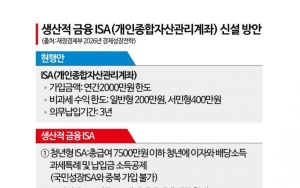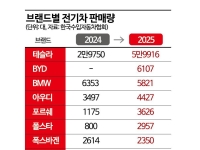런던, 1월13일 (로이터브레이킹뷰즈) - 유럽 위기 해결을 도울 더 나은 방법들이 있다. 유로존 지도자들은 4400억유로 규모의 유럽재정안정기금(EFSF)의 효율성을 높일 방법을 고심 중이다. 물론 기금을 개혁하면 시장 내 위기확산을 막는데 도움이 될 수 있다. 하지만 급격한 변화는 논의 대상에서 빠진 듯 보인다.
EFSF는 분명 개선될 수 있다. EFSF의 명목상 금액은 4400금액은 2550억유로에 불과하다. 수준이다. 하지만 만약 스페인과 같이 몸집이 더 큰 국가들로 불이 옮겨붙을 경우 이들까지 지원하기에는 부족하다.
현재 논의는 기금의 실질 지원 금액을 4400억유로가 되게 하자는 데 포커스가 맞춰져있다. 한가지 아이디어는 프랑스와 독일 같은 국가들이 지원 금액을 늘림으로써 EFSF의 가용 대출금은 확대시키고 동시에 기금의 트리플-A 등급 역시 유지하게 하는 방안이다. 하지만 이 안은 유로존 변방국 문제에 대해 프랑스와 독일의 늘리게 돼 이들 국가 내에서 정치적 난관에 부딪힐 수 있다.
또 다른 아이디어는 EFSF가 국채 매입을 시작하도록 해 위기 확산을 미연에 방지하는 것이다. 하지만 이는 문제가 생길 수 있다.
이보다 더 급진적인 EFSF 개정안이라고 한다면 예를 들어 이탈리아 구제 금융 사태와 같이 현재로써는 상상할 수 없을 중대 위기까지 커버할 수 있도록 기금 규모를 1조유로까지 확대하는 방안일 것이다. 하지만 유로존 각국 정부 입장에서 본다면, 꺼려하는 시스템 위기 사태가 올 것에 각국 정부가 적극 대응하고 있다는 신호를 줄 수도 있다.
EFSF 규모는 메인 이슈가 아닐지도 모른다. 현재 유리보에 3% 가산금리가 붙는 EFSF 차관은 비싸다. 재정 위기에 처한 국가들은 더이상 쓸 방법이 없을 때 EFSF에 손을 내밀겠지만 문제를 해결하기에는 때가 이미 늦었을지 모른다. 비용이 커 대출을 받은 국가들이 빚을 청산하기도 어렵다. 따라서 기금 비용이 낮아져야 이상적이다. 기금을 더욱 유연하게 만들면 스페인과 같은 국가들이 완전한 구제 금융이라는 고통을 감당하지 않고도 자국 은행들의 자본 확충을 감당할 수 있게 된다.
현재로써 급진적인 옵션들은 나온 듯 하고, 시장은 유로존이 거버넌스 개혁 계획을 이행해 나갈때 비로소 확신을 할 것이다. 그러는 동안에도 유럽이 더욱 포괄적이고 발빠르며 효율적인 구제금융 시스템을 갖고 시장보다 앞서 나갈 가능성은 여전하다. (네일 운맥 칼럼니스트)
** 본 칼럼은 개인의 견해로 로이터의 편집 방향과 일치하지 않을 수 있습니다.
원문기사
-BREAKINGVIEWS-Europe can find ways to make EFSF more efficient
-- The author is a Reuters Breakingviews columnist. The opinions expressed are his own --
By Neil Unmack
LONDON, Jan 12 (Reuters Breakingviews) - There are better ways to help. Euro zone leaders are debating making their 440 billion euro bailout fund more efficient. Revamping the fund could help fight market contagion. But radical changes don't seem to be on the agenda.
The European Financial Stability Facility (EFSF) could certainly improve. Despite its 440 billion euros of guarantees, it can only lend 255 billion, in order to keep a top rating. It is enough to handle Ireland and possibly Portugal -- but would become strained if other fires erupt in larger countries like Spain.
Current discussions focus on enabling the fund to lend the full billion euros. One idea would be for countries like
increase their guarantees, so that the EFSF can actually lend more, while keeping its triple-A rating. But this may run into political difficulties in Paris and Berlin, as it would raise their exposure to the periphery's woes.
Another suggestion would be for the fund to start buying government bonds, and help fight contagion ahead of time, instead of springing to action only when a crisis has developed. But this would amount to a de facto unconditional bailout, and might be legally challenged.
A more radical change would be a significant increase, perhaps to as much as 1 trillion euros, to cover major events that even today look implausible -- like, say, an Italian bailout. But for euro zone governments, this might send the signal that they are indeed bracing for a systemic crisis -- which they understandably want to avoid.
The EFSF's size may not be the main issue. The fund's lending, three percent over Euribor, is expensive. Troubled countries will only draw on it as a last resort -- and maybe too late. The high cost makes it hard for them to grow out of their debt. Ideally, the funds should be cheaper. Making the facilities more flexible would help a country like Spain recapitalise its banks without having to go through the pain of a full bailout.
The radical options seem out for now, and markets will only be convinced if the euro zone follows through on its governance reform plans. In the meantime, Europe still has an opportunity to get ahead of the markets with a more comprehensive, reactive and efficient bailout system.
<ⓒ세계를 보는 창 경제를 보는 눈, 아시아경제(www.asiae.co.kr) 무단전재 배포금지>







!["아내는 연상…원더우먼 같았다" 유산·가난 속에서 함께 버틴 박홍근 의원 '인생 최고의 반석' [배우자 열전]②](https://cwcontent.asiae.co.kr/asiaresize/319/2026010811050883808_1767837908.jpg)
![동갑내기 캠퍼스 커플…"예뻐보이더라" 정원오, 배우자 문혜정 첫 인상[배우자 열전]①](https://cwcontent.asiae.co.kr/asiaresize/319/2026010808171783102_1767827837.jpg)










